Table of contents
Learn more about the Bahians in Umbanda!
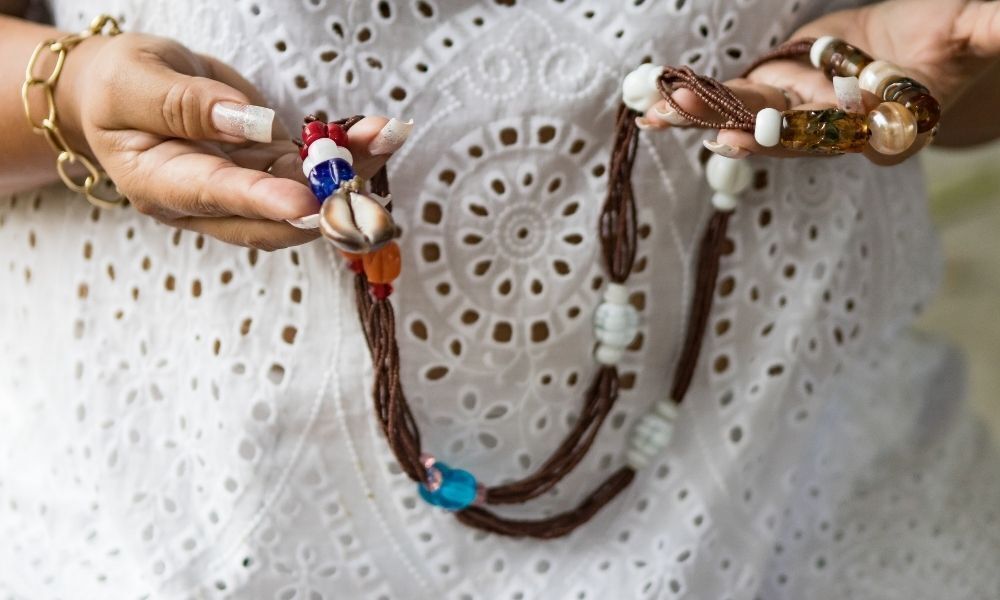
Umbanda is an Afro-Brazilian religion that brings in its giras entities that help in healing, divine evolution and with the earthly purpose of the consulters. The entities are divided into lines and the line of Baianos is one of the most requested within the religion when it comes to justice and hearing truths that need to be heard.
The Baianos are very patient and understanding entities with their consulters and mediums, because they bring with them a challenging history of life on Earth and understand the path that must be traveled for spiritual evolution.
For these reasons the Baianos have a legion of followers in the Umbanda centers in Brazil. Learn more about the history, the Baianos lines and more!
Getting to know the Bahians in Umbanda

The Baiano line is one of the most beloved lines within the Umbanda religion, being synonymous of strength, love, joy and hard work. The Baiano line arrives dancing, being difficult not to find this characteristic in their work, bringing a force into the terreiro where it causes the sensation that the whole environment changes.
The vibration and strength of the Baianos bring a new energy into the terreiro, having much affection when attending and listening to people. This affection can be understood by the history of struggle, suffering and resilience of the spirits that incarnate in this line.
History of Bahia entities in Umbanda
The line of Baianos in Umbanda is well known for several entities like Seu Zé Baiano, Zé do Coco, Baiano Mandingueiro, and others. The first researches dating from 1940, 1944, and 1945, affirm that the first Baianos and Baianas appeared in Umbanda in the 1940's. This is due to the migration of people from the Northeast to the Southeast.
However, there are some sung points that date back to the late 1920's, such as the point of Vó Joana da Bahia. If observed more closely, some Pretos Velhos already brought the history of Bahia into the terreiros, thus preparing the ground for this form of presentation of the joyful and blessed people that are the Baianos and Baianas.
In a point sung inside the Tenda de São Jorge (one of the 7 terreiros founded by Caboclo das 7 Encruzilhadas, that in 1908 announced Umbanda on the earthly plane), they sang: "If he is a Baiano, he is a Baiano from the terreiro", this point dates from the beginning of the 30s, that is, even before the Baiano line manifested itself in Umbanda, other lines were already preparing the material plane for its arrival.
Some versions of Umbanda believe that the Line of Baianos was created for the manifestation of ancestral fathers and mothers of saint, that without a sufficient evolutionary degree to become a Caboclo or a Preto Velho, had no space to manifest within the terreiro to continue their journey on the spiritual plane.
Thus, due to the need to accommodate these spirits and in honor of the great migration that people from the northeast made to the southeast, being extremely badly treated, the line of Baianos in Umbanda was born.
Characteristics of the Bahia guide in Umbanda
The Baianos in Umbanda are a line that does not tolerate injustice. If a Baiano attends a consulant who is suffering injustice, he takes the pains for himself and makes a point of not leaving that person's side until the problem is solved.
Despite having a paternalistic instinct of great affection and joy, this entity does not usually have "tongues" and will speak the truths that the consulent needs to hear. If he sees that the problem in the life of the consulent is being caused by himself, he will not hesitate to give a jolt to take responsibility and give direction on his path.
One should not lie to any spiritual entity, but Baianos have no tolerance for lies. When he sees that a consulter or a medium is lying, he always asks "are you sure my son?", and when confirming the lie, he gives the necessary ear pulling for the person to wake up.
Baiano does not like lazy people either. If he sees that the person is deserving, he will try to awaken all the feelings of desire, making the consulter roll up his sleeves and go into battle, but if he sees that the person is lazy, he will let him go on his way as he wishes.
Action of the Baianos in Umbanda
Despite the provocation and jokes that are said about baianos that do not like to work, these entities work and a lot. They are spirits that like to battle, as if they were honey and bee. These spirits do not measure efforts to help their mediums and consulters breaking demands and negative energies.
The profile of this entity is cheerful, hardworking, who does not refuse to enter a battle to defend those who deserve it and almost always comes out victorious. This is the characteristic of Baianos line of work in Umbanda.
Does the Bahian line represent the Bahian people?
Being one of the lines that brings regionality more present within its manifestations, it will be difficult not to see a Baiano in Umbanda who speaks with a marked accent, who does not use regional elements like the coconut or who does not appeal to saints like Nosso Senhor do Bonfim or even the figure of Padim Ciço. All these elements are in honor and representativeness of the people of the Northeast.
Umbanda has the characteristic of bringing the culture of regional people who have long been oppressed and marginalized, being easy to visualize within the terreiro this tribute and empowerment, with the spirits of the Indians, the black slaves, subjugated women, the gypsy culture and several others who had the margin of society.
Different lines of Bahia in Umbanda
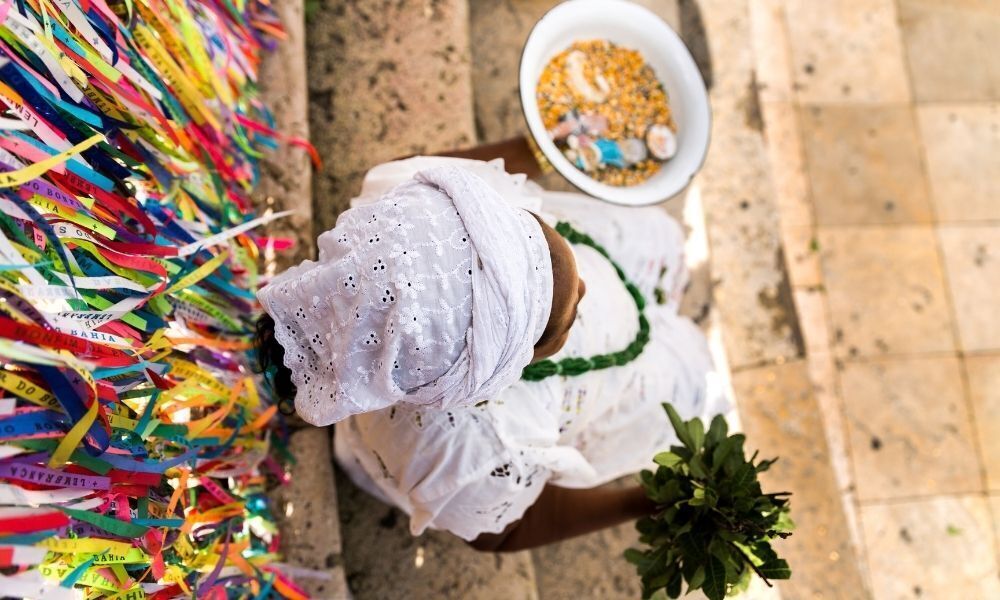
Umbanda is a plural religion, free of vertical command structure, so each region or even each terreiro has a particularity in its cults. When the Baiano line began to be based on the earthly plane, some interpretations and forms of worship emerged and were divided into two main ones, based on the form of worship of each region, in this case the axis Rio - São Paulo.
In essence, the form of work of the entities does not change, the only difference is in the understanding of the line of work. This understanding, which over the years has been grounded by the spiritual plane, thus removing the doubts and making today more homogeneous the understanding of this line. Learn more about some of these lines below.
Lines of Bahian in São Paulo
The line of thought presents the Baianos as a homage to the immigrants coming from the Northeast to the axis Rio - São Paulo, in the 60's. At that time all immigrants, coming from that region, were called Bahians, sometimes even in a pejorative way.
In the middle of the metropolis growth, these immigrants represented the work force, in the civil construction, in the cleaning, earning little and working a lot. In the 70's, when Brazil entered in an economic crisis, these immigrants began to suffer a lot of prejudice, being attributed to them the lack of job vacancies and the crowding of the cities, besides being related to bad taste things.
Who had this understanding of homage to the immigrant people, has already instituted the Linha de Baianos as a new line within the Umbanda works, with its own and independent structure and fundamentals.
Bahian line in Rio de Janeiro
There are two major lines of thought about the formation of the Baianos line, the Rio de Janeiro and the São Paulo ones.
The first line, very widespread in Rio de Janeiro's terreiros, says that the Baianos line is composed of spirits of black people, great sorcerers, fathers and mothers of saint from the antiquity of candomblé, great people who had contact with African rites and who developed a knowledge of mandingas and demands.
Today all these people, who understand the need to give charity and help other people, are concentrated in the line of Baianos.
Lines of Bahian in other locations
Nowadays the Baianos line is already well grounded and rooted inside religion and its worship and foundation is almost universal all over the country, just different from the thought chains in the beginning, thanks to time and spirituality the understanding of the mystery of this line was unveiled.
The line structured in Umbanda is its own and it is not possible to see it in another religion, but this does not mean that we cannot see these entities manifesting in other cults or even coming from other cults to Umbanda.
For example, an entity that for a long time manifested within the line of Baianos and today has its own line of work, Seu Zé Pilintra. Origin of the cult of Jurema masters called catimbó.
Catimbó is a cult of northeastern origin, the result of the encounter between the European with the Brazilian Indian and the African. Considered a national shamanic cult, the catimbó uses the incorporation of spirits that are called masters by them.
Some of these spirits, little by little, were presenting themselves in Umbanda and the main one is Seu Zé Pilintra, who used to incorporate in Baiano's giras and today has his own line called Linha dos Malandros.
Some common names for Baianos in Umbanda
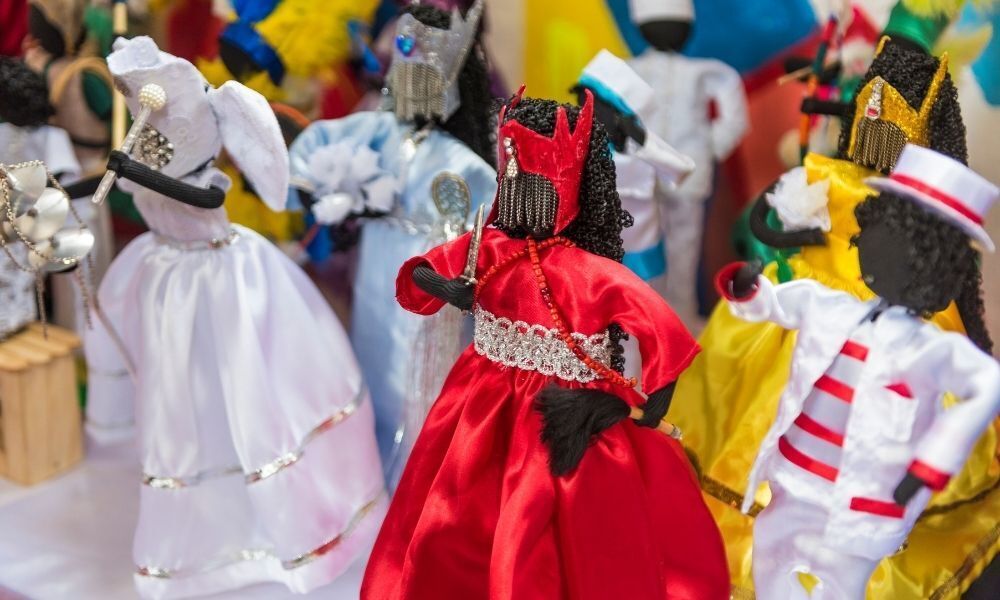
When they become Umbanda guides, the spirits enter a hierarchy called phalanx. The phalanxes are ruled by one or more orixás and can work within the strength of the other orixás. When one speaks of names of entities, one is not referring to an individual, to a specific entity, but to the phalanx to which that entity integrates.
Therefore, it is normal to have two or more entities in the same terreiro with the same name. This does not mean that an entity is incorporated in three people at the same time. It means that those three mediums incorporate different spirits, but that they are part of the same phalanx.
These spirits join a phalanx, by affinity and energy compatible with the method of work, below we will see some names of Baianos and within which mystery they act.
João do Coco
The spirits that manifest in this line are ruled by the orixá Xangô and act within the line of Oxalá. This entity manifests itself in several ways, but its action is in the justice linked to faith, that is, if something or someone attempted against your faith, causing an injustice to you, this phalanx of Baianos can help.
They usually receive their offerings in quarries and open fields, and their candles can vary beyond the yellow color that is the line of Baianos, and can be brown or white, linked to Xangô and Oxalá.
Zé Baiano
Zé Baiano's work is to dismantle negative works, open the paths and protect the consulters and their mediums. It is an entity ruled by the orixá Ogum, so its work is done a lot in the battle fields.
The offerings made to them can be made on "paths", on a road, on a train line. The ideal is that it be a long path connecting point A to point B. The candle offered to this entity can also be dark blue.
Mediums of this entity, tend to be loyal and true, not admitting injustice in any way, always fighting for the weakest, like a fight, but mainly to defend their loved ones. They tend to move away from the family to live great adventures, especially amorous.
Manoel do Facão
Manoel do Facão is a very cheerful and very strict Baiano. He is that Baiano that makes you think and reflect. He works in the irradiation of Ogum and the moral of one of his stories reflects well who he is: "Better to be a cheerful jester under a gray sky, than a sad jester under a blue sky with a grumpy heart."
Manoel do Facão leaves the teaching that despite the difficulties, we are the ones who choose how to react to them, you can be the fool, who complains about everything and nothing is good or you can be the happy fool who does not let adversities get you down, because you know that is what makes you grow.
Pedro da Bahia
The entity Pedro Bahia manifests and carries the energy of the orixá Xangô. They are by excellence calm and moderate, weigh the facts very carefully and always seek justice for their mediums and consulters.
They are direct entities and can sometimes even seem rude, but their sole purpose is to guide and direct you so that you can visualize the solutions in your life.
Because they radiate the orixá Xangô, this entity receives its offerings in quarries and the colors can be yellow and brown. They seek to always transmit to their mediums the energy of obstinacy, courage and strength. They give firmness of purpose and direction.
Simon
Simon was a fisherman who met Jesus through his brother Andrew and at the time told him that from then on he would no longer be a fisher of fishes, but a fisher of men. Later, during Jesus' ministry, the name Simon was changed to Cephas/Kephas (translated as Peter).
The meaning of this new name referred directly to the mission later given to Peter, who was to become the rock (foundation) upon which the Church of Christ was to be built.
Therefore, the same characteristics presented above for Baiano Pedro da Bahia can be attributed to this line of work, they are different phalanxes, but with the same field of action and work characteristics.
Maria do Rosário
This phalanx of Baianas, Maria do Rosário, has similarity with the line of Pretas Velhas Vó Maria do Rosário. These entities manifest themselves in the line of Iemanjá and Oxum. They are entities that work in the energies of generation and love. Their colors can be yellow, pink or light blue and the points of force of nature can be beaches and waterfalls.
When we talk about the entities that work in these forces, they are usually connected to maternity, either in conception or generation, cases of women who would like to get pregnant, cases of mothers who are suffering for their children, etc. The Baiana Maria do Rosário tends to have more attention in the resolution.
Baiana do Balaio
Very well known in the cult of the Tambor de Mina nation, which is practiced in Maranhão, Piauí, Pará and in the Amazon, an Afro-Brazilian religion. Baiana do Balaio is originally from Umbanda, very much in demand mainly for her knowledge of healing through herbs.
This Baiana is irradiated by Iansã's strength, but works in the energy of several Iabás (female orixás), being very specific to each entity. Her color can be yellow, pink or red, and her offerings can be placed in open fields, waterfalls and quarries. With her joy and dance, the Baiana do Balaio arrives unloading the terreiro, mediums and consulters.
Maria Quitéria
The entity Maria Quitéria works supported by the forces of Iansã, lady of the winds, has the power of the breath, to remove, to clean all evil that may be present in the life of the consulent or the mediums.
It is an entity that can sometimes present itself as an elderly black woman, also seen as a witch, because she is a great holder of knowledge in magic. She likes warm colors such as yellow, orange and red, her offerings can be made in open fields, quarries and roads.
Friend of Vitorino
This line is a phalanx that is part of the Baianos in Umbanda. They are cheerful entities that move in the terreiro, helping in family matters and breaking low magic. Always very helpful to the consulters and mediums, they do their work elevating the place and the people in it, spiritually.
The entities of the Amigo do Vitorino phalanx drink coconut shakes and eat typical Bahian food. Their colors are white or yellow, and their clothing, usually white clothes and leather jacket. They wear straw or leather hats. Their offerings can be made in open fields and quarries.
Maria Bonita
Maria Bonita is a phalanx that manifests in several other lines as well, always with a lot of faith. She is an entity that works in the irradiation of the orixá Oxum.
Oxum is the lady of love, gold and beauty, the work of the Baianas. In this line of action is a work aimed at helping people to balance love in their lives, attract prosperity and also in the conception of life.
Maria Bonita, a well-known woman in Brazilian folklore, represents female empowerment, strength and vitality. She especially helps women to grow and develop, not allowing abuse or belittling. She is a strong, focused, lively and very solicitous entity. The place for her offerings can be a waterfall and her color can be yellow or pink.
Lampião
The entities known as Lampião represent a subline within the line of Baianos. They tend to come in specific works of cleansing and disobsession. This line is not usually called for consultations within Umbanda. It is a relatively new line that works within the energies of the orixá Iansã. Its color can be yellow and red and its place of offering can be in open fields andquarries.
The objective of this line is to help in the works, bringing to the medium and to the consulter the self-confidence and the mental strengthening. It is worth to point out that this line of cangaceiro, does not necessarily aggregate those members of gangs like Lampião, the spirits that manifest themselves in this line, do so by affinity to the cangaço, so they are representatives of that region.
Zé da Peixeira
The phalanx of Zé da Peixeira is irradiated by the orixá Ogum and brings with it the ordering and cutting power of the orixá. The Baianos have their particular way of working and cutting demands, mirongas and mandingas.
This entity is loyal, reliable and friendly, being very irreverent and focused. This line brings with it the power of Bahia, power that for a long time was used by several cults and not by chance the first known candomblé house was from Bahia.
Other information about the Bahians in Umbanda
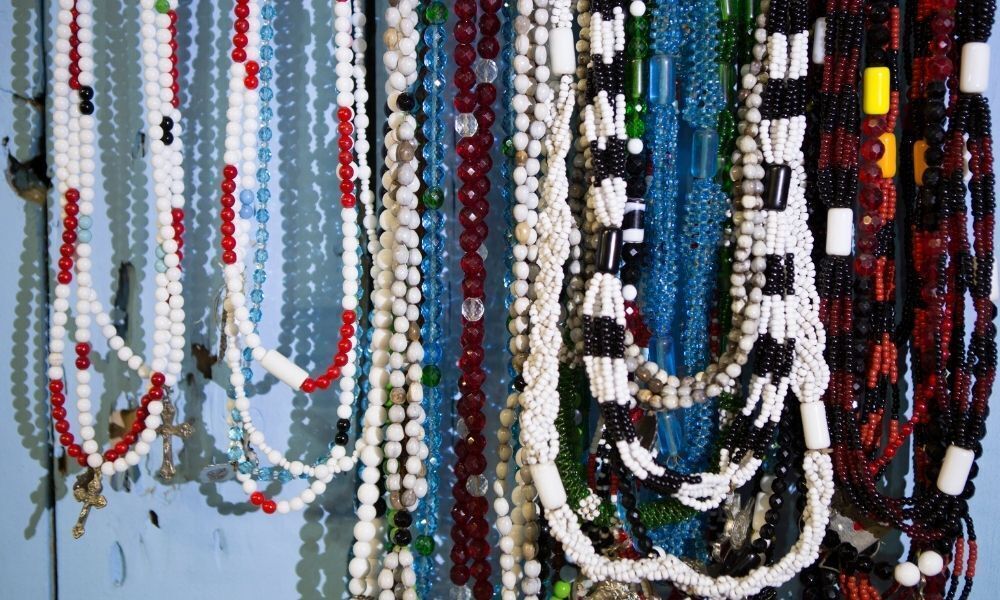
These entities have their particularities and personality. Each one varies within its phalanx and also from the characteristic of each spirit, since each entity is a spirit with different experiences.
The Baianos guides appeared to firm the proximity of the culture of a place between the people, are several teachings that these entities pass, mainly by the fact that they carry a strong positive energy. They represent self-knowledge, peace, love, health, protection and prosperity for the life of all that seek them. See more below.
Bahia's Day
Due to syncretism and devotion to Nosso Senhor do Bonfim, the commemoration day of the Baianos is February 2nd, according to Umbanda roots. Their day of the week varies between Monday, Tuesday or Friday, according to each tradition.
Colors of the Baianos
Each Baiano brings with him an orixá that rules his field of work, so it is normal to see Baianos using several colors for their work. However, there is a "universal" color for all Baianos, it is yellow.
Offering to the Baianos
The offering to the Baianos can be made at home or in several natural points of force. Everything will depend on the ruling orixá of that entity and its purpose. The offering does not need to have all the following items, and can vary by the need to be achieved, but below is a complete offering of the Baianos line in Umbanda:
Yellow and white towel or cloth; yellow and white candles; yellow and white ribbons; yellow and white threads; yellow and white pembas; fruits (coconut, persimmon, pineapple, grapes, pears, oranges and mangoes); flowers (field flower, carnation and palms); foods (acarajé, corn cake, farofa, cooked dried meat and with onions); drinks (coconut and peanut drinks).
Bahian herbs in Umbanda
The herbs in Umbanda are used for baths and smokings, there is no single rule of combinations, in this case each entity can pass a set of specific herbs for certain purposes.
We have separated a set of herbs that you can use to connect to the energy of the Baianos. And during your bath or while doing your smoking, you can ask for the presence and strength of these entities. The herbs are: eucalyptus, pau tenente, aroeira, arruda, levante, alecrim do norte, cipó cruz, angélica, algodoeiro.
Greetings to the Bahians
The greeting to Baianos in Umbanda varies from tradition to tradition, but the most common are:
- Saravá the Baianos;
- Saravá the Baianas,
- Saravá all the people of Bahia;
- "Hail to Bahia."
- "Hail to those of Bahia."
Ponto de baiano
Some sung points of Baiano and Baiana:
Baiana do it and don't tell/ Not afraid of demand/Baiana do it and don't tell
Not afraid of demand/Baiana witch/daughter of Nagô
Works with pemba powder/To help Babalaô
Baiana yes/Baiana come/ Break the mandinga with dendê
Baiana yes/Baiana come/ Break the mandinga with dendê
_________________________________________
Oh, oh, oh, my Lord of the Bonfim / Save me Saint Salvador
Oi, let's saravá my people/ The people of Bahia have arrived
Bahia, Bahia, Bahia de São Salvador / Whoever has never been to Bahia, pray to God our Lord.
_________________________________________
A good Baiano/Baiano bom/ Good Baiano is the one who knows how to work
A good Baiano/Is the one who climbs the coconut tree/Takes the coconut, drinks the water
And leaves the coconut in place
_________________________________________
When I came from Bahia road I didn't see
When I came from Bahia road I didn't see
Every crossroads I passed a candle I lit
Every crossroads I passed a candle I lit
Coquinho Coquinho Baiano, Coquinho from Bahia
Coquinho wins quest with Senhora da Guia
Prayer to the Baianos
"Hail Our Lord of Bonfim, Hail all the people of Bahia, I cry out at this moment to your presence, help me in my journey and give me your protection, according to my merit.
I ask that every injustice committed against me, according to your eyes, be undone. I ask that any and all negative energy and demand that may be acting in me or in my home be broken, removed and forwarded to its deserving place.
I ask forgiveness for my faults and my mistakes and that you continue to walk with me, giving me direction so that I will never make another mistake.
In the name of God, Holy Cross, amen. Saravá to all the people of Bahia."
The Bahians in Umbanda represent a joyful people!
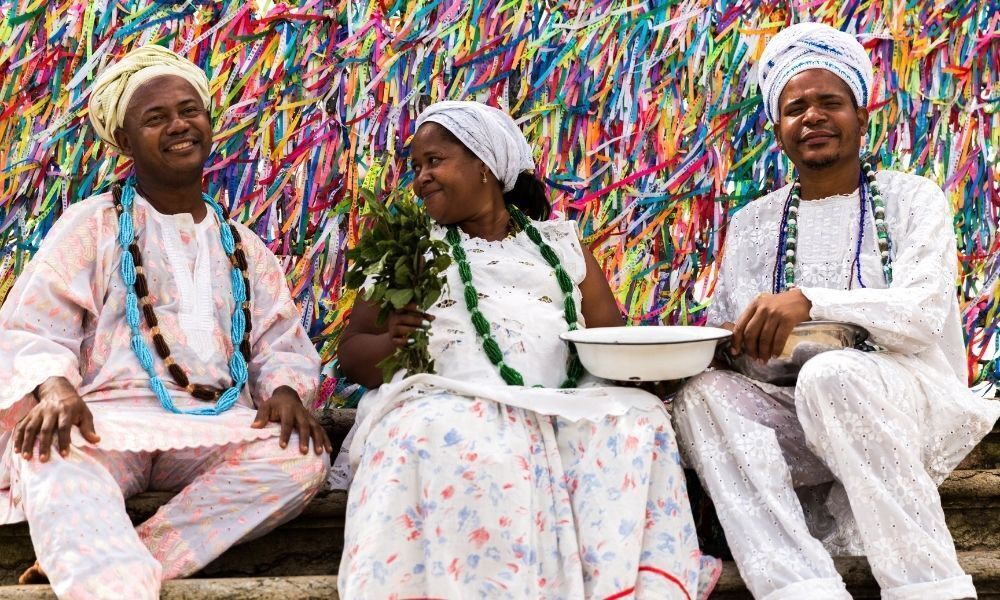
Baianos are very beautiful entities, full of positive vibrations and energy.
Even when their consulters seem to have problems or sadness, after contact with the Baianos in Umbanda they feel almost immediately calm and joy flow inside.
Always very helpful and funny, they gain a legion of followers, those who seek lightness and the ability to resolve issues in their way, like the Bahians.

